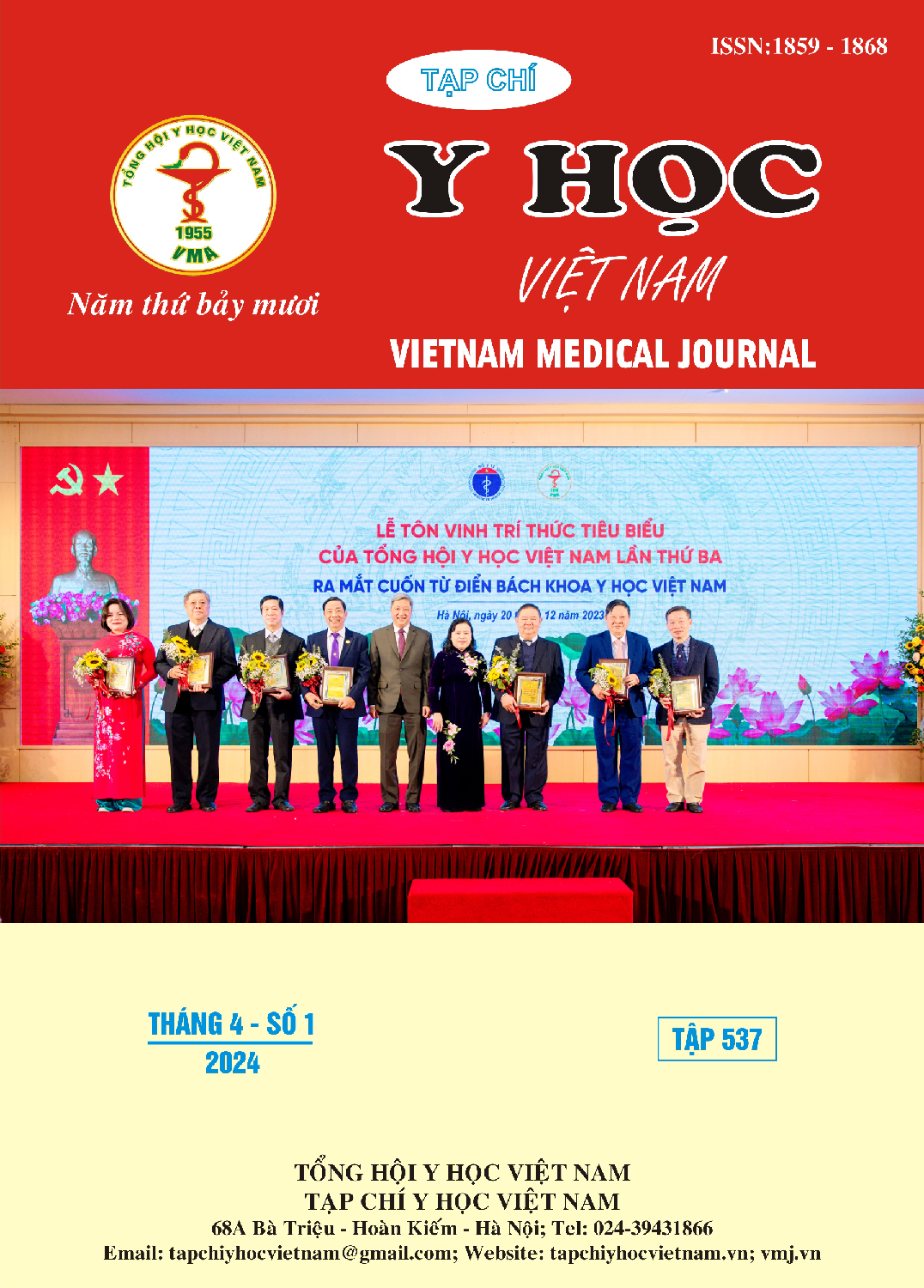IDENTIFY SOME VIRUSES CAUSING COMMUNITY- ACQUIRED PNEUMONIA IN CHILDREN FROM 2 MONTHS TO 5 YEARS OLD AT VIETNAM NATIONAL CHILDREN'S HOSPITAL
Main Article Content
Abstract
Objectives: Identifying some viruses in community-acquired pneumonia in children from 2 months to 5 years old at Vietnam National children’s hospital. Methods: Descriptive study, cross-sectional and prospective study. Research location: Vietnam National children’s hospital research period from 2020-2021. Study patients: 113. Research results: The positive rate for viruses in children from 2 months to 5 years old with community-acquired pneumonia is 95,6%, of which positive for 2 viruses for the highest rate of 46,9%. Identified viruses are Rhino (53.1%); RSV (38.9%), Parainfluenza (33.6%), Human Metapneumovirus (hMPV) (13.3%), Coronavirus (7.1%), Adenvirus 8%, Influenza A (2,7%). The rate of only viral infection is higher than the rate of bacterial virus co-infection. The group from 2 months to under 6 months of age has the highest virus positivity rate (100%). Boys are hospitalized for viral community-acquired pneumonia at a higher rate than girls. The positive virus rate did not differ between the two sexes. Conclusion: The positive virus rate in community-acquired pneumonia in children is very high. Determining the viral cause of community-acquired pneumonia in children helps clinicians plan treatment, provide preventive advice, and use antibiotics more appropriately.
Article Details
Keywords
Viral pneumonia in children, respiratory viral infections in children, community - acquired pneumonia in children.
References
2. Wei Ji 1, Zheng-rong Chen, Wei-fang Zhou, Hui-ming Sun, Bei-quan Li, Li-hong Cai, Yong-dong Yan. “Etiology of acute respiratory tract infection in hospitalized children in Suzhou from 2005 to 2011”.Zhonghua Yu Fang Yi Xue Za Zhi. 2013 Jun;47:497-503
3. Chun JK, Kim HS, Cheong HM, Kim KS, Kang C. (2009), “Establishing a surveillance network for severe lower respiratory tract infections in Korean infants and young children”, European Journal of Clinical Microbiology & Infectious Diseases.
4. Adebola E Orimadegun 1, Adedayo A Adepoju 2, Landon Myer 3. “A Systematic Review and Meta-analysis of Sex Differences in Morbidity and Mortality of Acute Lower Respiratory Tract Infections Among African Children”. J Pediatr Rev. 2020 Apr;8(2):65-78. doi: 10.32598/jpr.8.2.65
5. Samuel Rhedin 1, Ann Lindstrand 2, Annie Hjelmgren 1, Malin Ryd-Rinder 3, Lars Öhrmalm 1, Thomas Tolfvenstam 4, Åke Örtqvist 5, Maria Rotzén-Östlund 6, Benita Zweygberg-Wirgart 6, Birgitta Henriques-Normark 6, Kristina Broliden 1, Pontus Naucler. “Respiratory viruses associated with community-acquired pneumonia in children: matched case- control study”.Thorax. 2015 Sep;70(9): 847-53. doi: 10.1136/ thoraxjnl-2015-206933. Epub 2015
6. Chang Hyu Lee 1, Youn Kyoung Won 1, Eui-Jung Roh 2, Dong In Suh 3, Eun Hee Chung. “A nationwide study of children and adolescents with pneumonia who visited Emergency Department in South Korea in 2012”. Korean J Pediatr. 2016 Mar;59(3): 132-8. doi: 10.3345/ kJp.2016.59.132.Epub 2016 Mar 31
7. Guijun Ning, a Xuxia Wang,b Dan Wu, a Zundong Yin,a Yixing Li, a Huaqing Wang, a and Weizhong Yanga. “The etiology of community-acquired pneumonia among children under 5 years of age in mainland China, 2001–2015: A systematic review”. Hum Vaccin Immunother. 2017 Nov; 13(11): 2742–2750. Published online 2017 Sep18. doi: 10.1080/ 21645515.2017.1371381 Jun 15.
8. Vikki G Nolan, Sandra R Arnold, Anna M Bramley, et al. “Etiology and impact of coinfections in children hospitalized with community-acquired pneumonia”. The Journal of infectious diseases. 2018;218(2):179-188.


